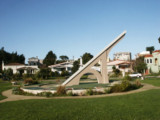 |
Sundials at the extremes | 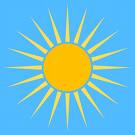 |
|
The Jantar Mantar [calculating machine] observatory in Jaipur, India, has a collection of 19 astronomical instruments built in the 1700's.
The sign to the right gives the correction factor ("difference of the time") on 8/30/2015 as 27 minutes at Jantar Mantar, Jaipur, which is the same as the NOAA correction for that date and location [latitude 26.92488, longitude 75.824162 degrees]. The altitude of the sun at noon for that date and location was 72 degrees. |
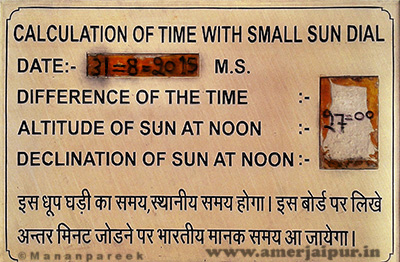 |
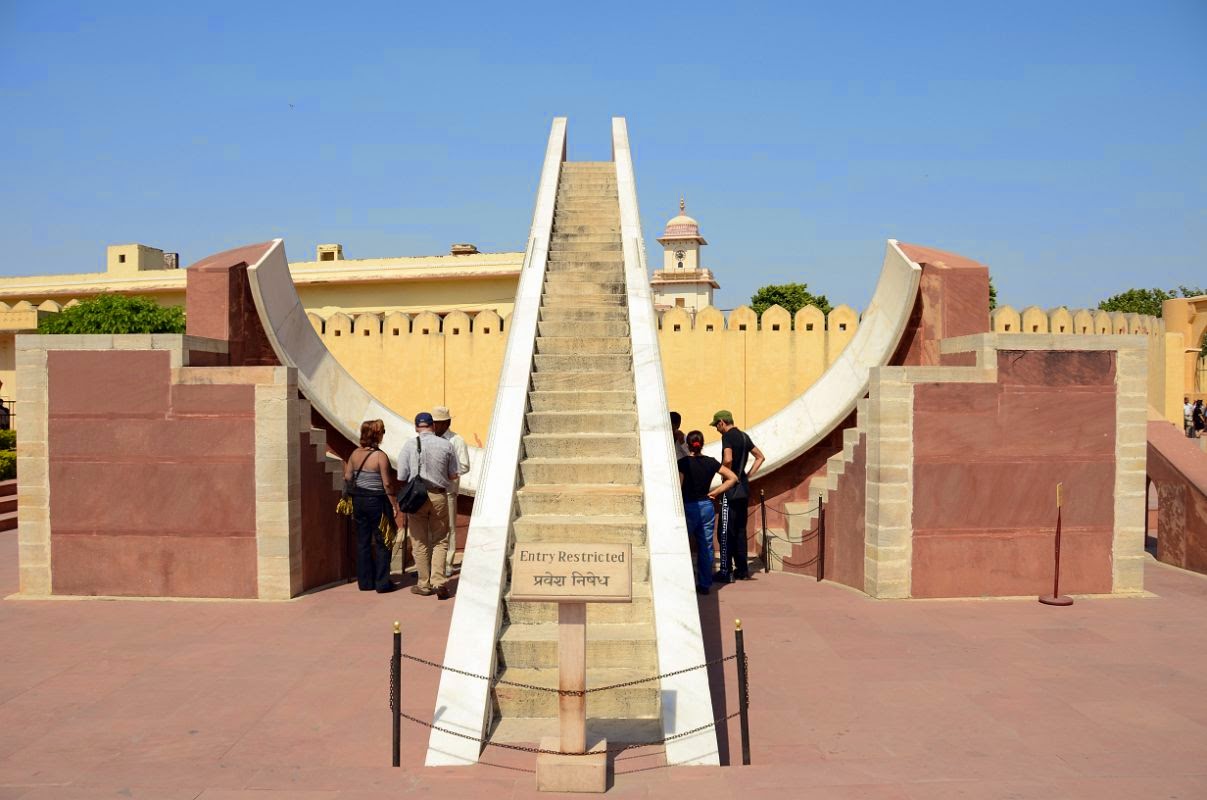
This is the Laghu Samrat Yantra [small emperor machine] sundial in the Jantar Mantar observatory in Jaipur, India. Indiaraju. The image to the right is a view of its dial from Charles Earl blog. Right click to view a larger image. The scale divisions in the dial, from inner to outer, are as follows: Hours with the Indian numerals 11 and 12; fifteen minutes; five minutes; one minute; and three 20 second marks per minute. The image can be read to the nearest minute, but reading it to the nearest 20 seconds is difficult. Sun time is read as 11:44. The EXIF of this photo shows that it was taken on 11/20/18 at 11:55:37 A.M. with an iPhone 8. There is a 12 minute 15 second time correction for this date and location NOAA. 11:44 sun time + 12'15" correction = 11:56:15 clock time, so there is less than a minute difference between clock time and corrected sun time. (Adding another minute correction for a reading in the morning would result in more than a minute difference.) |
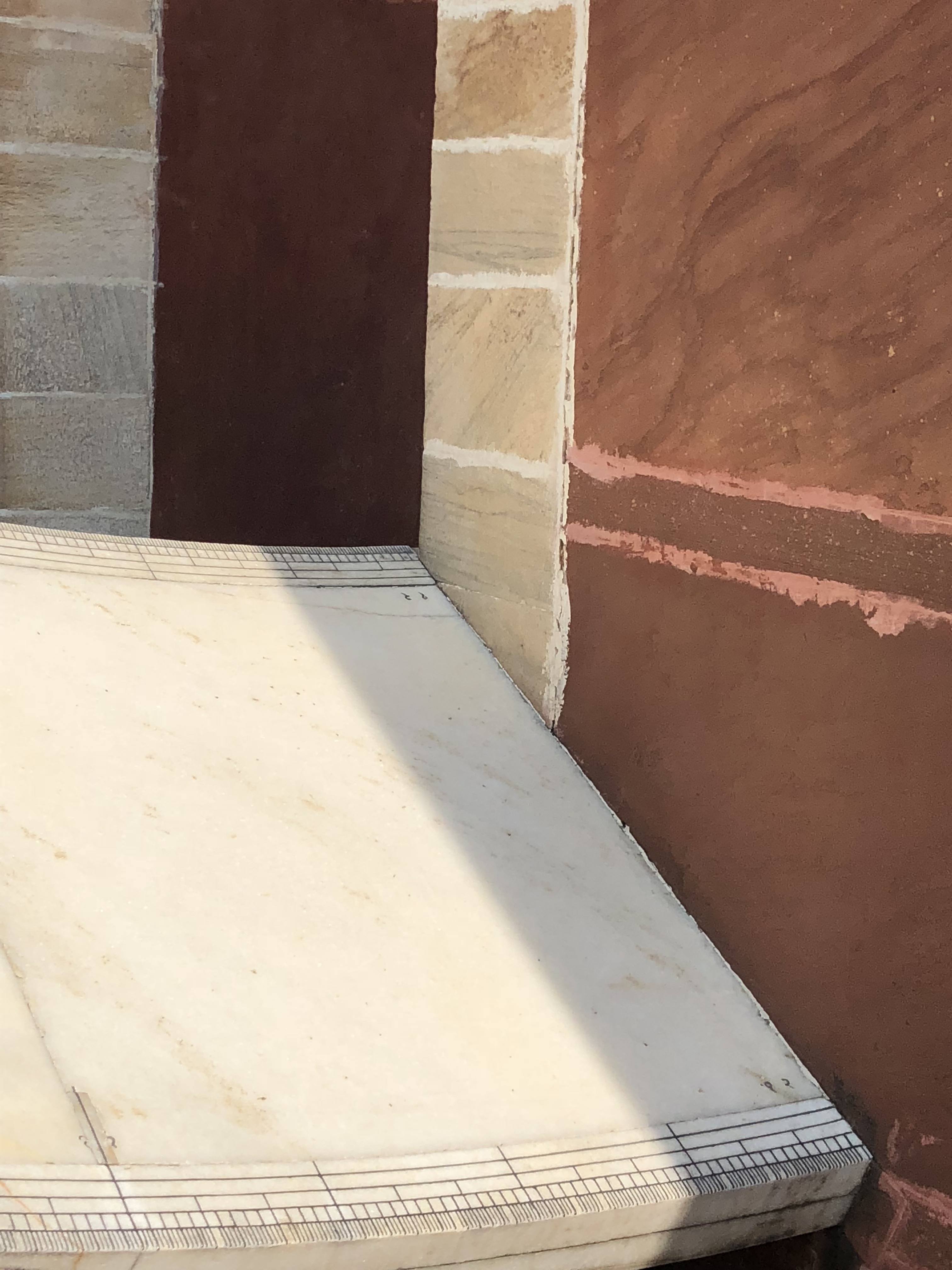
|
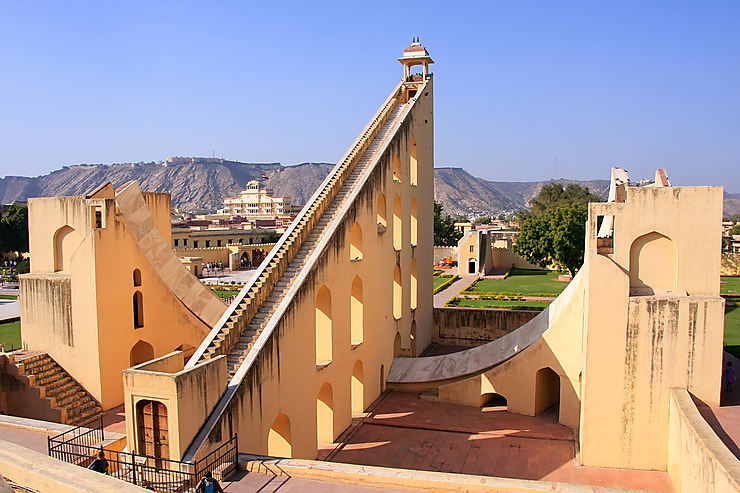
This is the Vrihat Samrat Yantra [vast emperor machine] in the Jantar Mantar observatory in Jaipur, India. routard.com. Height is 74', length of gnomon is 164 feet. The length of the dial on either side is 78 ft. UNESCO. The sun's shadow moves 2.6 inches per minute and 2.2 mm/two seconds. There are unsubstantiated claims on the web that the Vrihat sundial can be read with an accuracy of two seconds, which is doubtful. The Sundial Bridge in Redding, California has a much longer gnomon. |
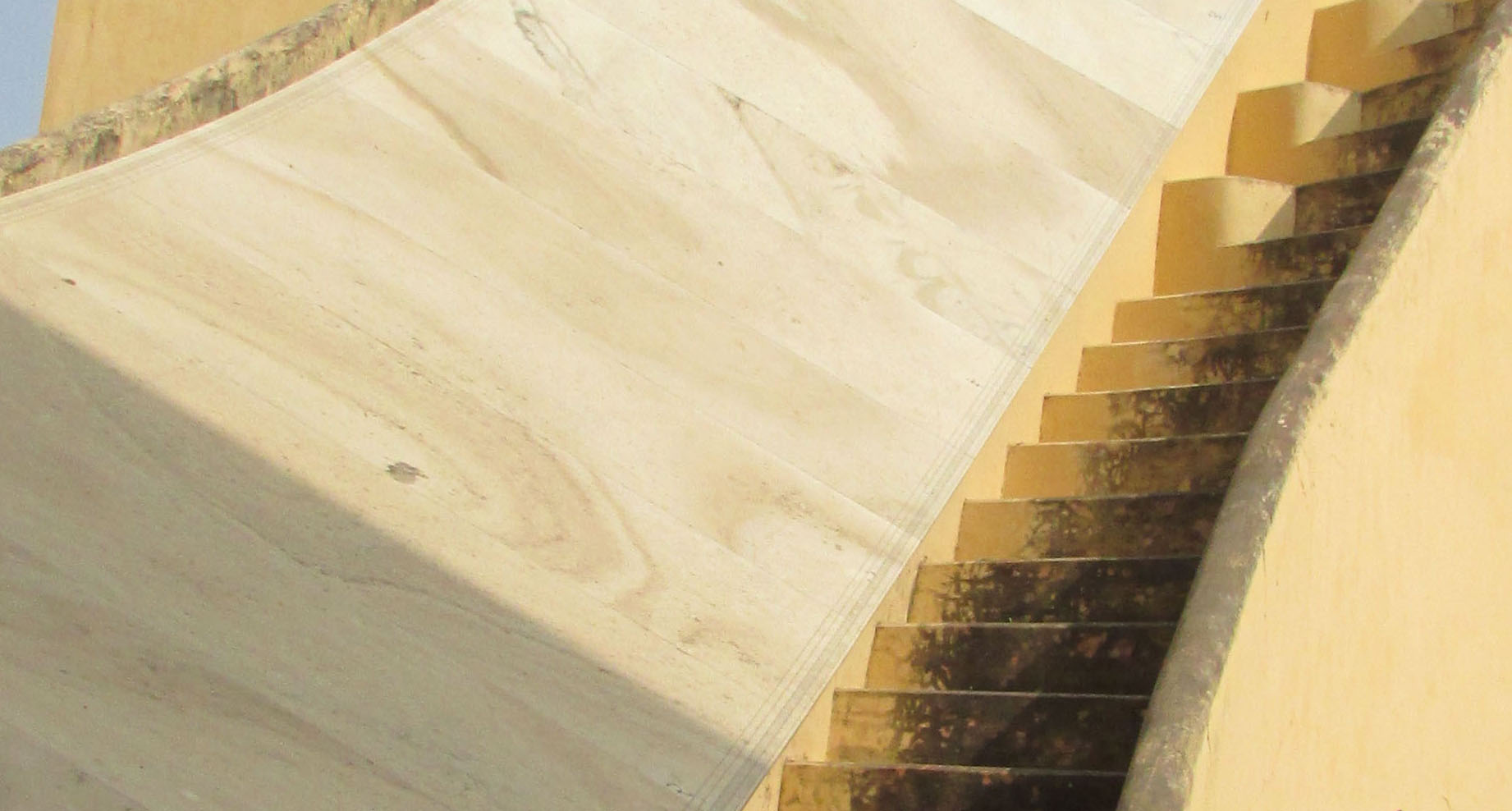
This is a view of its dial from Wikimedia. Right click to view a larger image. It is difficult to read the time scale. The Indian numeral 2 is at the bottom right of the dial and 3 is at top right. The shadow of the gnomon is about 1/10 of the distance between 2:00 and 3:00, which corresponds to sun time of approximately 2:06. Clock time is given in the Wikimedia page as 13 November 2017, 14:25:24. There is an 11 minute time correction for this date and location NOAA. 2:06 sun time + 11' correction = 2:17 clock time, so clock time and corrected sun time differ by approximately eight minutes. If a more accurate photo is found, I will make use of it. Click here for a 100 year old etching of the Jantar Mantar observatory in Delhi, India. |
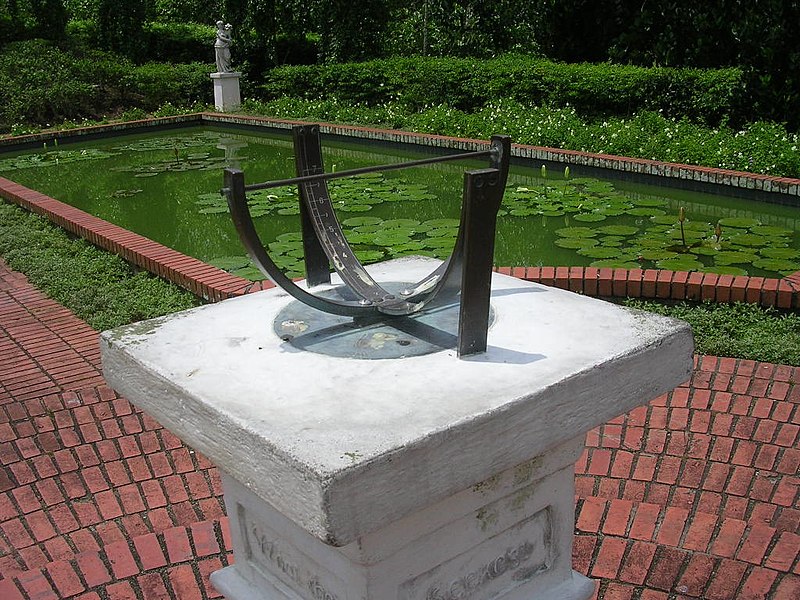 Here is an equatorial sundial in the Singapore Botanic Gardens. The horizontal alignment of the gnomon is due to its being located at 1.3 degrees north latitude, just above the equator. The hour lines are parallel to the gnomon. |
Here is an easy to make equatorial sundial:
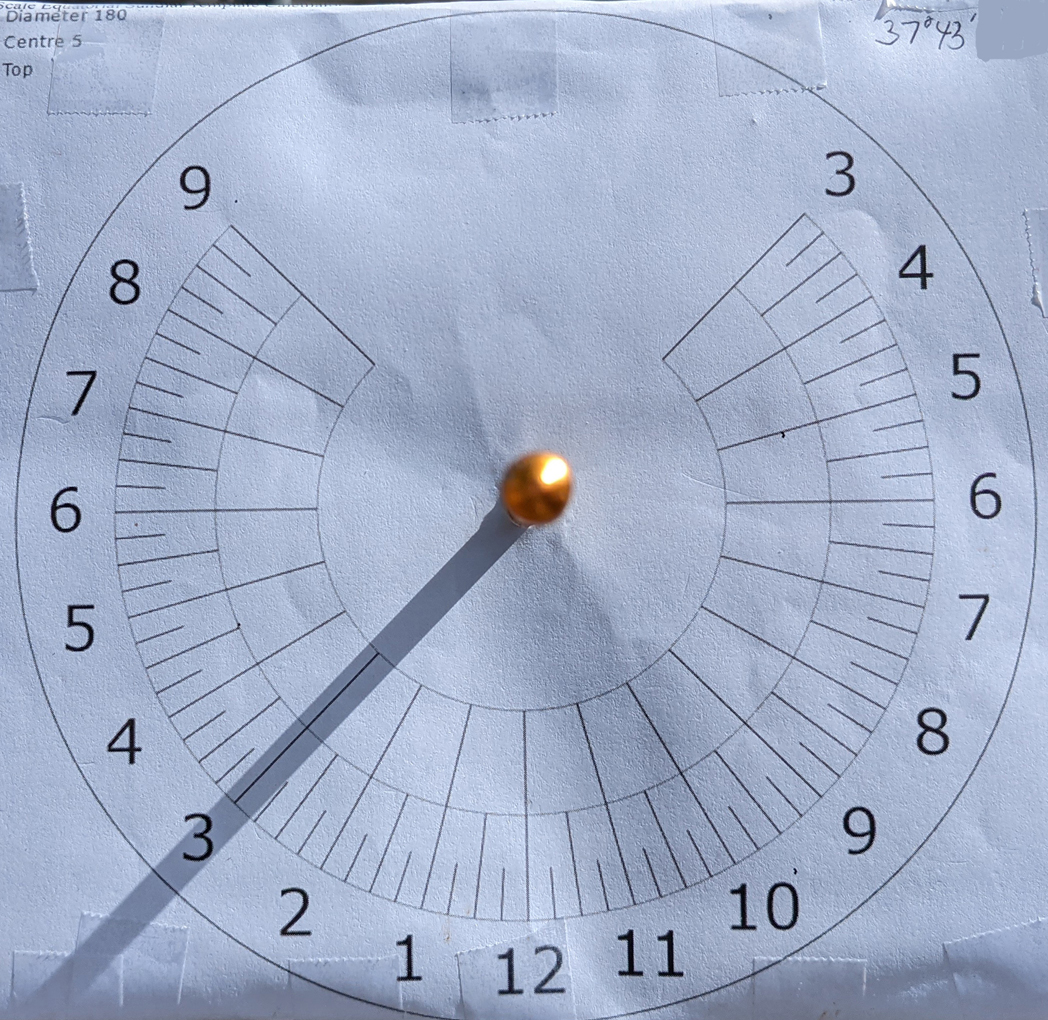 |
| A South Pole marker is put in place yearly. In 2014, it was a sundial.
Could be called an equatorial sundial, because the dial is parallel to the equator. Could be called a horizontal sundial, because the dial is horizontal, paralled to the ground. 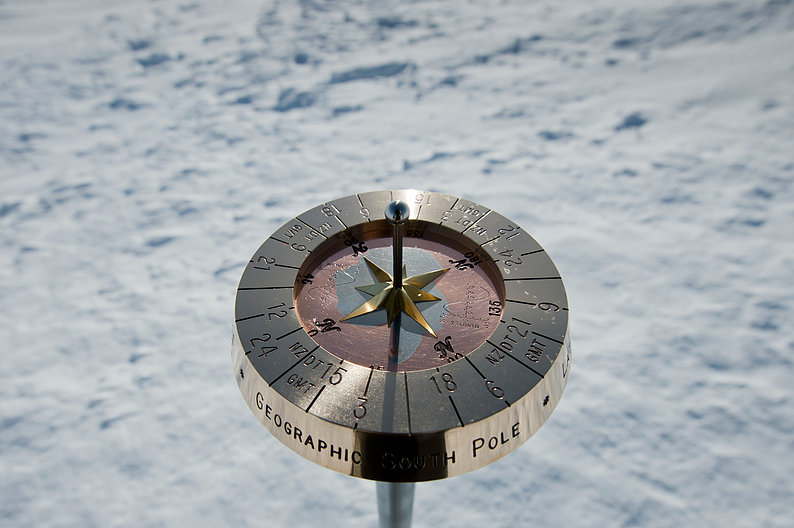
The gnomon is vertical, 90 degrees. The hour lines equal the hour angle. Time is 3:30 GMT. There is no sundial on the ice floes at the North Pole. |
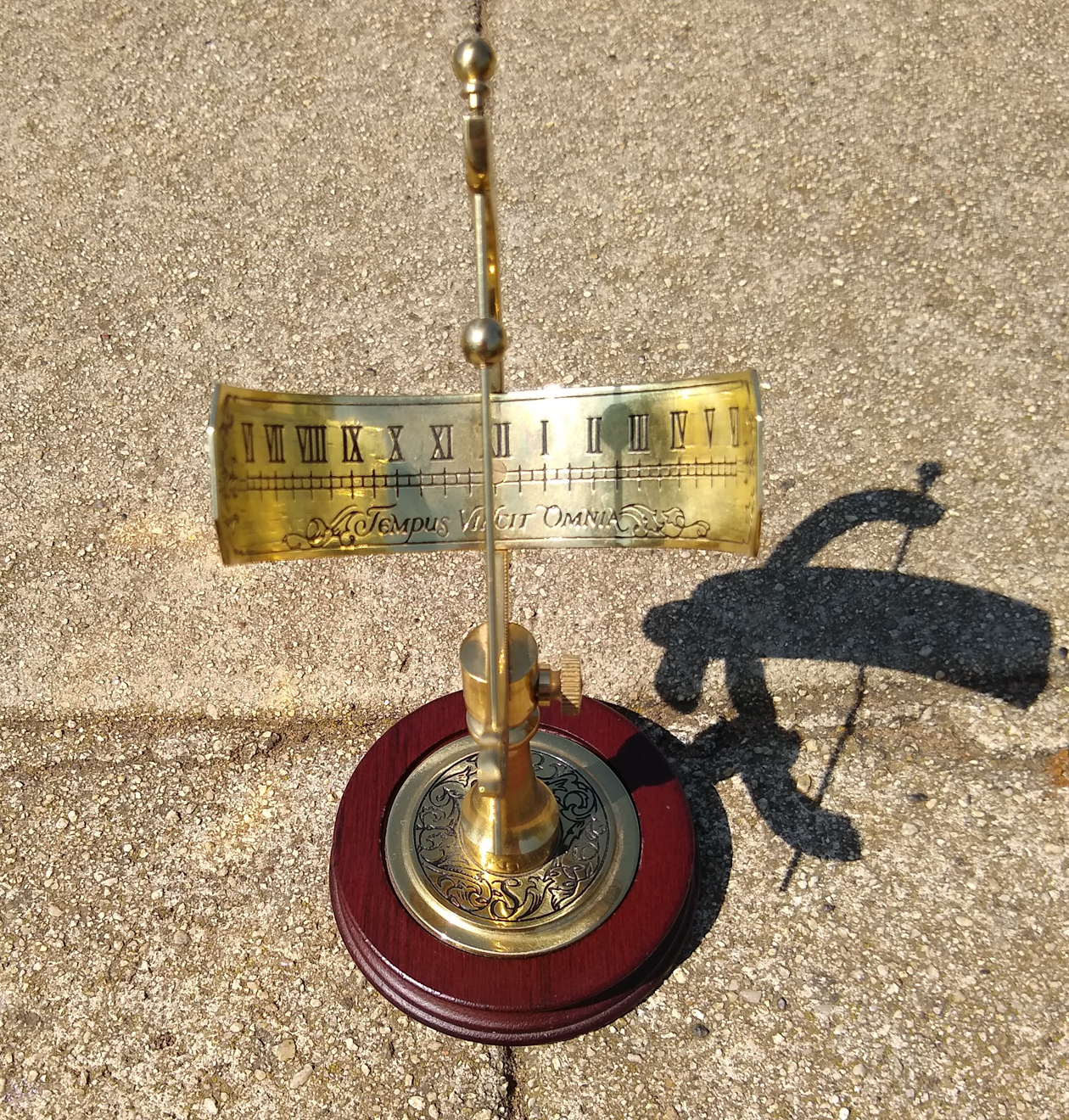
|
